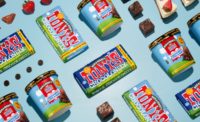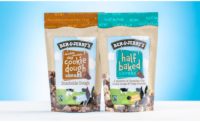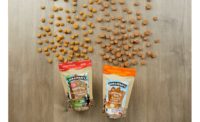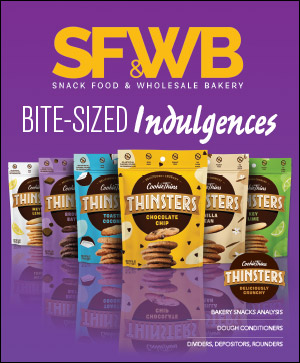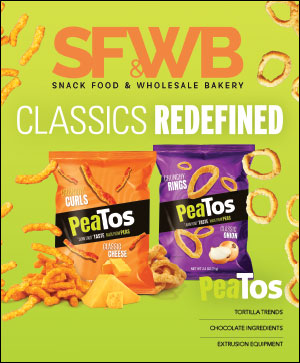2020 brand loyalty winners: Ben & Jerry's, Planters, Doritos

Customer brand loyalty has increased on average 20 percent from 2019 to 2020 across 85 leading B2C, B2B, and D2C categories, which encompass 16 industry sectors and 833 brands, according to Brand Keys 25th annual Customer Loyalty Engagement Index (CLEI), conducted by the New York-based brand engagement and customer loyalty research consultancy (brandkeys.com).
“Analysts, consulting firms, and research practices that declared brand loyalty dead are talking about a consumer loyalty model that expired in 1990,“ noted Robert Passikoff, president of Brand Keys. “Back then loyalty was a black-and-white issue for consumers. But loyalty didn’t die. Rather, it has evolved in a more complex marketplace with more sophisticated consumers hungry for brands that better meet their expectations.”
How complex? One hundred percent of the path-to-purchase snack category loyalty drivers have new, consumer-generated configurations. Attribute, benefit, and value components that form the components of those drivers have grown more complex, more connected, and more emotional in 84 percent of the snack categories.
Snack Brands’ 2020 loyalty focus
Numbers in parentheses indicate YOY increases of in-market brand loyalty.
Ben & Jerry’s (Ice Cream +20%)
Planters (Nuts +18%)
Rold Gold (Pretzels +14%)
Doritos (Tortilla Chips +13%)
Nature Valley (Breakfast Bars +13%)
5-Hour Energy (Energy Drinks +12%)
Lay’s (Potato Chips +11%)
Cheetos (Cheese Snacks +10%)
Cheetos (Corn Snacks +10%)
Boar’s Head (Cold Cuts +9%)
Defining loyalty for the 21st century
“Two decades into the 21st century the world has more complex brand and mediascapes. It’s more data-rich and technologically-intensive. Consumers are more complex, connected, and complicated. They connect with each other before even considering connecting to a brand and assess loyalty relative to how they envision an ‘Ideal’ brand,” said Passikoff.
“It only takes a nanosecond for consumers to note how well a brand is ‘seen’ to meet their expectations for the path-to-purchase drivers that defines behavior toward and fidelity to a brand. That’s the 21st century version of brand loyalty,” said Passikoff. “Brands that can meet consumer expectations will always see higher levels of engagement, loyalty, and sales.”
Independent validations by the ARF verify that definition. Correlations between assessments based on this updated definition of loyalty and consumer behavior are 0.80+. “Marketers who focus on so-called ‘loyalty programs’ expecting real brand allegiance, totally miss the point,” noted Passikoff.
Orders of path-to-purchase loyalty driver change, becomes more complex
“Categories and brands are not static” noted Passikoff. “They change, and how consumers view, compare, and buy, are governed by the order and level of expectation of the key loyalty drivers in any category.”
Disruptive market forces, technology, innovation and relentless competition all play a part in how the order of loyalty drivers shift and why consumer-value components become more complex. “But the end results are predominantly driven by consumers’ attitudes and desires, much of which is unarticulated,” noted Passikoff, “and virtually all of which are emotionally-based.”
“Brand Keys’ predictive research methodology identifies shifts 12 to 18 months before they appear in traditional brand tracking, focus groups or traditional research surveys based on a 20th century definition of ‘loyalty’.”
The order of importance of drivers represents a value continuum that consumers navigate, largely unconsciously, in their purchase and loyalty journeys. Consumers hold specific expectations for each category loyalty driver and use their expectations for the Category Ideal as a “yardstick” against which they measure brand performance. Brands that best meet consumer expectations always have the most-loyal customers and, not-so-coincidently, the strongest sales and highest profits.
For potato chips in 2020, not only has the order of the loyalty drivers changed (and how consumers assess these brands), but the attribute, benefit, and value components that make up the drivers have become more complex, representing a genuine consumer perspective because the output of the model obviates the fact that consumers don't think how they feel, they don't say what they think, and don't do what they say they will.
“The majority of 2020’s categories and brands will have to address these more complex paths-to-purchase loyalty drivers and more emotionally-based customer values,” noted Passikoff. “But some categories have been inert, without changes to the order of loyalty drivers and no added consumer-value complexity. These brands start to look like commodities and competing in a commoditized sector makes for a much tougher battle for loyalty.”
Categories approaching commodity status included: gasoline, beer, cosmetics (mass), pet food, home improvement retail, bottled water, yogurt products, economy hotels, and packaged cold cuts.
A complete list of the CLEI’s 85 categories and the brands that exhibited 2020 loyalty focus and best meet consumer expectations can be found at http://brandkeys.com/portfolio/customer-loyalty-engagement-index
Defining the loyalty challenge
“Marketers face a three-part challenge to leverage brand loyalty – as opposed to relying on legacy point programs,” noted Passikoff.“ First, they need to recognize it is 2020, not 1985, and define ‘loyalty’ as it applies to today’s consumers and the emerging marketplace. Second, they need to define objectives based on how customers actually view their category and identify what consumers expect, not based on tweet-counts or NPS scores, but on actual loyalty assessments. Finally, marketers need to design tactics that provide emotional brand engagement, not just more devalued points.”
“Do all that, and you’ll have more engaged, more loyal customers which comes hand-in-hand with increased sales and profits. That’s what real loyalty is all about today. It’s also a pretty good definition of ‘successful marketing,’” noted Passikoff.
Looking for a reprint of this article?
From high-res PDFs to custom plaques, order your copy today!




